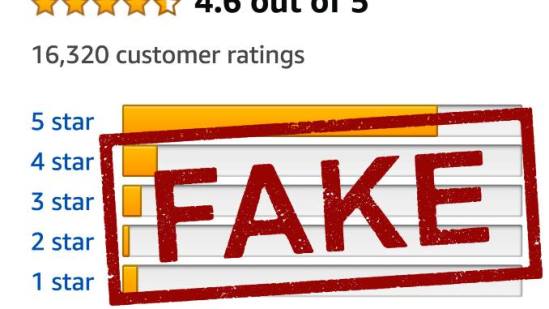In 2023 alone, Google took down an eye-popping 170 million fake reviews of hotels, restaurants and businesses – a 32% increase from 2022; while Trustpilot flagged 3.3 million reviews as fake on its site.
RELATED: A third of Amazon book reviews are fake, study uncovers
With the rise of AI, fake reviews are becoming more sophisticated and harder to spot, blurring the line between authentic feedback and fabricated content. With summer sales in full swing, the AI experts at AIPRM have provided five tips to help you spot fake AI reviews and shop with confidence this summer.
Don’t get fooled: 5 expert tips to spot fake AI-generated reviews
- Watch for generic gimmicks
AI-generated reviews can sometimes seem like they were pulled from a generic, one-size-fits-all script – bland, vague and lacking that human spark. Be wary of reviews that rely on generic phrases and could be applied to almost any product. Instead, look for reviews that describe how the product was used, highlight specific features that stood out, and share any unique experiences the reviewer had. Genuine reviews often include nuances and personal insights that are harder for AI to replicate.
Example:
Potentially fake review: “This product is great. It works well. I recommend it.”
Real review: “I’ve been using this vacuum cleaner for two months, and I’m really impressed with how it tackles pet hair! The battery life could be better, but overall, it’s a solid purchase for pet owners.”
- Analyse the reviewer’s profile
Get into detective mode and scrutinise the reviewer’s profile for clues about authenticity. Real users usually have a history of varied reviews across different products and services. In contrast, fake profiles might only have a handful of reviews, often clustered around the same dates, or lack any personal details like a profile picture and bio.
Example:
Potentially fake profile: A user with three reviews that are all 5-star ratings, posted within the same week.
Real profile: A user with a mix of positive and critical reviews spanning various product categories over several months or years.
- Look for extreme opinions
Another tell-tale sign of fake AI reviews is overly positive or excessively negative feedback, but lack any real details to back them up. Genuine reviews often present a balanced perspective, acknowledging both the pros and cons of a product or service.
Example:
Potentially fake review: “Best product ever! No complaints at all!”
Real review: “I love the design and functionality of this blender, but it is quite noisy. It gets the job done efficiently though.”
- Cross reference reviews across multiple platforms
Don’t just rely on one website for your review research. Be savvy and compare reviews across different platforms like Amazon, Yelp, and Trustpilot to get the full picture. Consistent feedback across different sites can indicate genuine experiences shared by real-life users.
Example:
Potentially fake review: A product with exclusively 5-star reviews on one site but a mix of ratings on others.
Real review: A product with a general trend of positive feedback but also some critical reviews that highlight minor issues.
- Examine the timing of reviews
If you notice a flood of reviews for a product all posted within a short time frame, especially if they are uniformly over positive or negative, it might be a sign that AI is at play. Fake AI reviews often appear in clusters unlike authentic reviews that trickle in overtime as users share their unique experiences at different intervals.
Example:
Potentially fake review: A product receives dozens of glowing reviews all posted within a few days or hours.
Real review: A product has reviews spread out over several months, with users sharing their thoughts at different times.

































